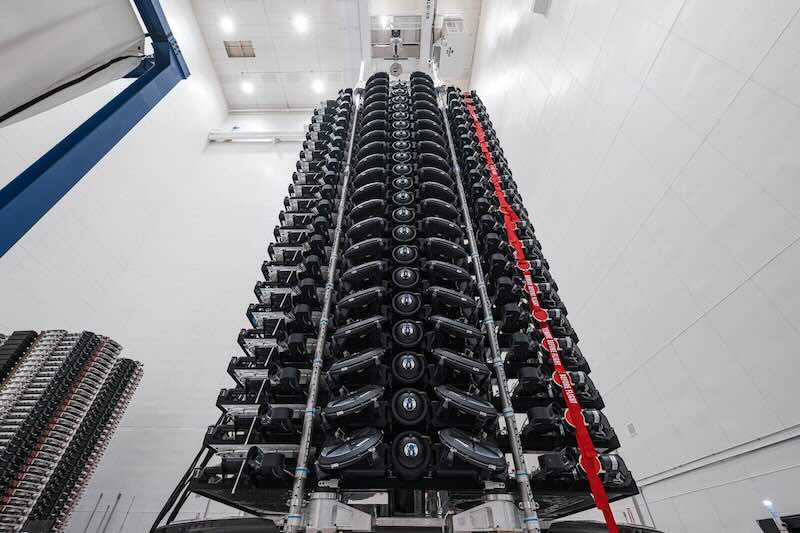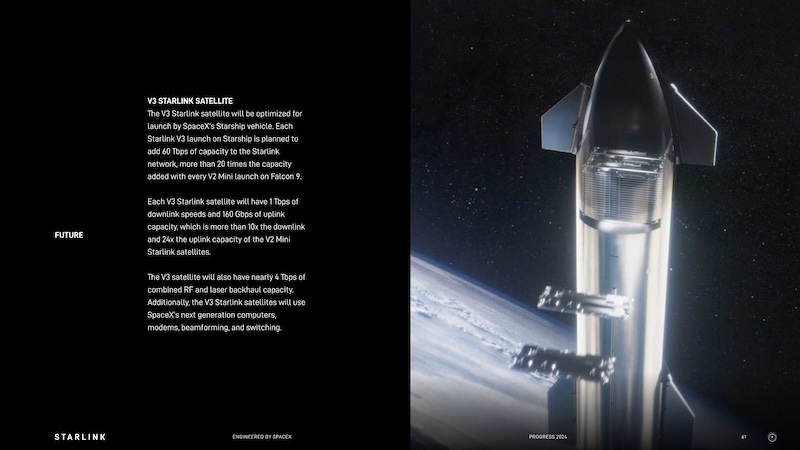SpaceX has significantly increased the number of Starlink satellites it can launch at once, thanks to a redesigned version of its V2 Mini satellite that’s 22% lighter than its predecessor. Weight reduction allows the company’s Falcon 9 rockets to carry up to 29 satellites per mission—a substantial increase from the 20-23 typically launched in early 2024.
The improved design, dubbed “V2 Mini Optimized,” weighs approximately 575 kilograms (1,267 pounds) at launch, compared to the original V2 Mini’s heavier frame. Optimization enables SpaceX to boost its orbital network capacity more efficiently as it works to expand Starlink service globally.

SpaceX Starlink Satellites
The numbers show impressive momentum in Starlink’s deployment strategy. In the first three months of 2025 alone, SpaceX has launched 622 Starlink satellites to orbit, including:
- 440 standard V2 satellites
- 182 satellites with direct-to-cell capabilities
This deployment pace represents a Starlink launch approximately every 3.6 days, with an average of nearly 23 satellites per launch. If this cadence continues, SpaceX could potentially deploy around 2,300 Starlink satellites throughout 2025.
Why the push for more satellites? Accelerated deployment comes at a critical time for Starlink. Current network capacity is stretched thin in certain parts of the United States, forcing SpaceX to implement waitlists for new residential customers in high-demand areas.
Each V2 Mini satellite can deliver 96Gbps of network bandwidth, making them significantly more powerful than earlier generations. First introduced in early 2023, these satellites were designed to provide higher quality broadband than the older V1.5 models.
While SpaceX continues optimizing its V2 Mini satellites for Falcon 9 launches, the company is simultaneously developing the more powerful V3 Starlink satellite. Next-gen hardware aims to deliver gigabit internet speeds but requires SpaceX’s Starship vehicle—still undergoing test flights—for deployment.

SpaceX next-gen V3 Starlink satellite
Until Starship becomes operational for Starlink launches, V2 Mini Optimized represents SpaceX’s most efficient path to expanding network capacity. Recent increase to 28 satellites per launch over the past two weeks signals that this optimization strategy is already paying dividends.
SpaceX’s satellite weight reduction highlights the company’s focus on launch efficiency as it races to provide reliable broadband to users worldwide—demonstrating that in the satellite business, sometimes less weight means more star power.
Related Post
SpaceX Starlink Texas Factory Now Producing 15,000 Starlink Kit Terminals Daily
SpaceX $1.8B Florida Expansion: Gigabay Facility & New Starship Launch Pad Coming by 2025
SpaceX Launches $10 Starlink Roam Plan: Weekend Internet for Casual Travelers
